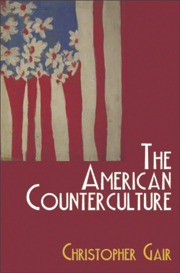2 - Music
from Part One - 1945–1960
Published online by Cambridge University Press: 05 August 2013
Summary
Each true jazz moment … springs from a contest in which each artist challenges all the rest, each solo flight or improvisation, represents … a definition of his identity: as individual, as a member of a collectivity and as link in the chain of tradition. Thus, because jazz finds its very life in an endless improvisation upon traditional materials, the jazzman must lose his identity even as he finds it.
Ralph Ellison, Shadow and Act (1967)The breakthrough year was 1955, when the airwaves rocked with Fats Domino's ‘Ain't That a Shame,’ Bill Haley and his Comets’ ‘Rock Around the Clock,’ Chuck Berry's ‘Maybelline,’ and Little Richard's ‘Tutti Frutti.’ That same year, The Blackboard Jungle linked the boiled-down ‘Rock Around the Clock’ with the dread juvenile delinquency.
Todd Gitlin, The Sixties: Years of Hope, Days of Rage (1987)Protest is an element of all art, though it does not necessarily take the form of speaking for a political or social program.
Ralph Ellison, ‘The World and the Jug’ (1963–4)Broadly speaking, it is possible to summarise the Beat aesthetic under a small range of influences and interests. In literature, the poetic tradition of Blake and Whitman, alongside a wider indebtedness to the American Renaissance, and twentieth-century poets such as William Carlos Williams and Hart Crane, contributed to the emphasis on personal, often confessional, texts such as ‘Howl’ and On the Road. Like Whitman, the Beats were happy to collapse the divide between high and popular culture, being as willing to celebrate The Shadow (Kerouac, Amiri Baraka) or Lana Turner (Frank O’Hara) as to cite Melville or Pound. This concern is extended in the practice of incorporating American idioms and vernacular into almost all Beat novels and poems.
- Type
- Chapter
- Information
- The American Counterculture , pp. 56 - 76Publisher: Edinburgh University PressPrint publication year: 2007

